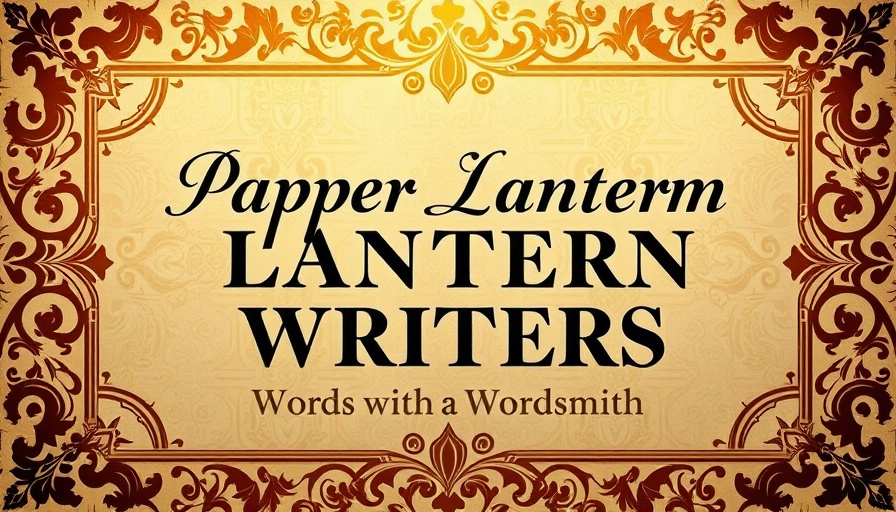
A Journey Through Time: Diana R. Chambers and Historical Fiction
In the realm of historical fiction, few authors evoke the rich tapestry of the past like Diana R. Chambers. With her book, The Secret War of Julia Child, gaining traction, it’s clear that Chambers has a knack for merging captivating storytelling with incredible historical events. From the battlefields of World War II to the understated grace of quiet moments shared amongst individuals in crisis, Chambers transports readers into worlds shaped by power, resilience, and, often, romance.
Why Historical Settings Resonate
Chambers’ inclination toward weaving stories in foreign lands aligns with her personal experiences. "I find myself drawn to historical stories in a foreign setting," she shares, referencing beloved films like The English Patient and Lawrence of Arabia. Her fascination lies in exploring how humans navigate their lives amidst turbulent historical contexts. This is not merely about the backdrop; it’s about the human condition—the emotional depth that accompanies characters as they confront their realities shaped by history.
Real History Breeds Rich Narratives
Many of Chambers’ works are inspired by true events, which she believes breathe authenticity into her narratives. She recounts tales set against the Mekong River, detailing how it flows through a tapestry of cultures and histories—from Tibet across several countries and finally into the South China Sea. Such real-life elements provide a framework that enriches her storytelling, giving her fictional characters deeper meaning rooted in actual events.
Exploring Female Resilience in Historical Fiction
A common thread through Chambers’ works is the portrayal of strong women in challenging times. In her narrative about Julia Child, a key figure in America's espionage during World War II, Chambers showcases how intuition and bravery can define destinies. This not only honors female resilience but also appeals to readers who appreciate compelling tales of women overcoming societal barriers in complex circumstances.
The Magic of Place in Storytelling
Chambers’ method of setting stories in captivating locales serves a dual purpose: not just to enhance the narrative but also to excite readers’ wanderlust. Whether it’s the tumultuous mountains of the Karakoram Highway or the alluring realms of the Raj, each place acts as a character in her stories. This aligns with a common appeal in literature—the idea that a setting can evoke emotions and help drive the central themes of historical novels.
Books That Bring History to Life
For fans of authors like Kristin Hannah and Kate Morton, Diana R. Chambers’ work offers similar emotional resonance. Readers invested in books that explore hidden family secrets, lost letters, and the intertwining of personal narratives with historical events are bound to find Chambers’ novels a treasure trove. Her soft historical fiction, characterized by beautiful prose and emotionally rich storytelling, invites an exploration of heritage and identity through the lens of a woman’s experience.
The Emotional Weight of Historical Fiction
Books that blend history and memory resonate with those seeking more than just a tale; they provide a conduit for engaging with the past. In exploring themes of survival, love, and courage, Chambers’ work embodies emotional truths that offer solace and connection. For readers invested in the nuances of history—especially where it interfaces with personal stories—her novels serve as engaging discussions about legacy and lineage.
Conclusion: Finding Your Place in the Story
Diana R. Chambers illuminates not just the events of the past but the profound emotions tied to these narratives. As history continues to inspire contemporary storytelling, her work stands as a reminder that every story is a bridge between what has been and what could be. For those who yearn for books that speak to the heart while capturing the trials and triumphs of history’s heroes—look no further than Diana R. Chambers.
 Add Row
Add Row  Add
Add 




 Add Row
Add Row  Add
Add 

Write A Comment